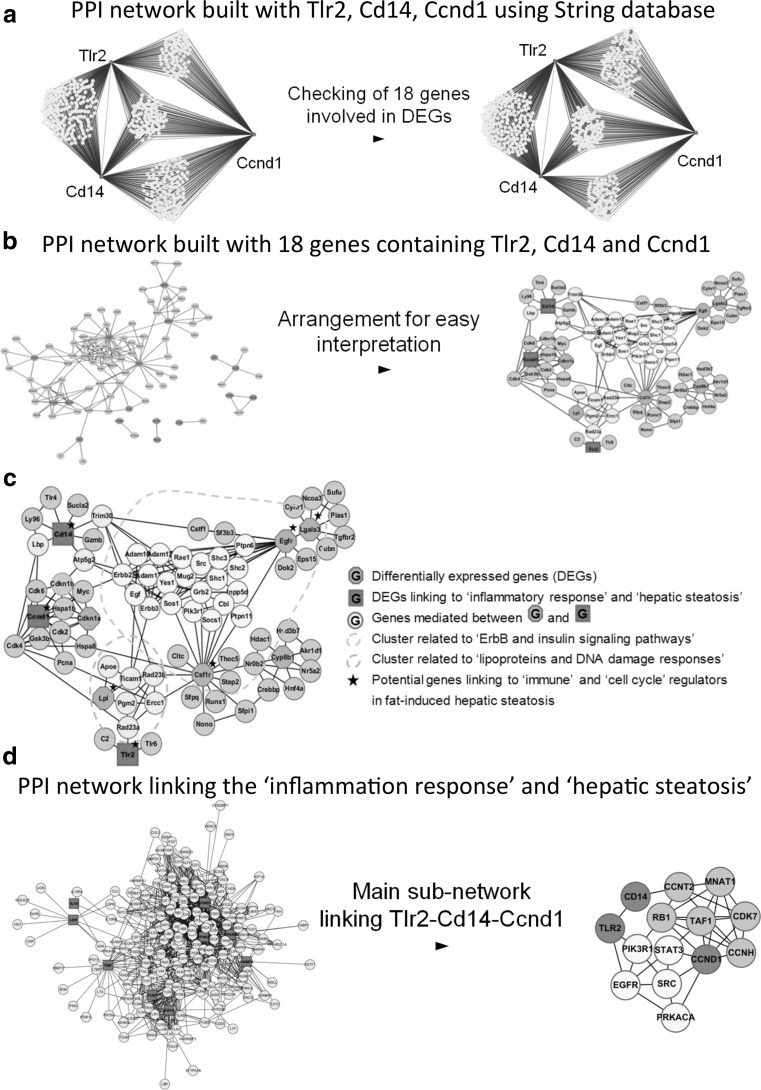Fig. 5.
Hepatic steatosis protein–protein interaction (PPI) network for (I) mice and (II) humans. IPA revealed Tlr2, Cd14, and Ccnd1 were high-fat diet responsive hub genes associated with both the inflammatory response and hepatic steatosis. Using the PPI database (I), eighteen high-fat responsive genes were selected from PPI network built with Tlr2, Cd14, and Ccnd1 using String database (a). Final PPI network was constructed with 13 matched genes among 18 genes in Cytoscape plug-in for MiMI and rearranged for easy interpretation (b). Significantly differentially expressed genes linking the inflammatory response and hepatic steatosis were Tlr, Cd14, and Ccnd1 (red nodes). The protein–protein interaction network revealed two gene clusters associated with “lipid transport and DNA damage repair systems” (green nodes) and “ErbB/insulin signaling pathways” (yellow nodes). Lpl, Egfr, Lgals3, and Csf1r may play a role in the progression of hepatic insulin resistance, macrophage activation to severe non-alcoholic fatty liver disease in diet-induced obesity (c). (II) A human PPI network was built with 9 genes linking between “inflammation response” and “hepatic steatosis” using Cytoscape plug-in for MiMI. Tlr2 and Cd14 were associated with Ccnd1 by Egfr/insulin signaling molecules such as Egfr, Pik3r1, Prkaca, Src, and Stat3 (color figure online)

